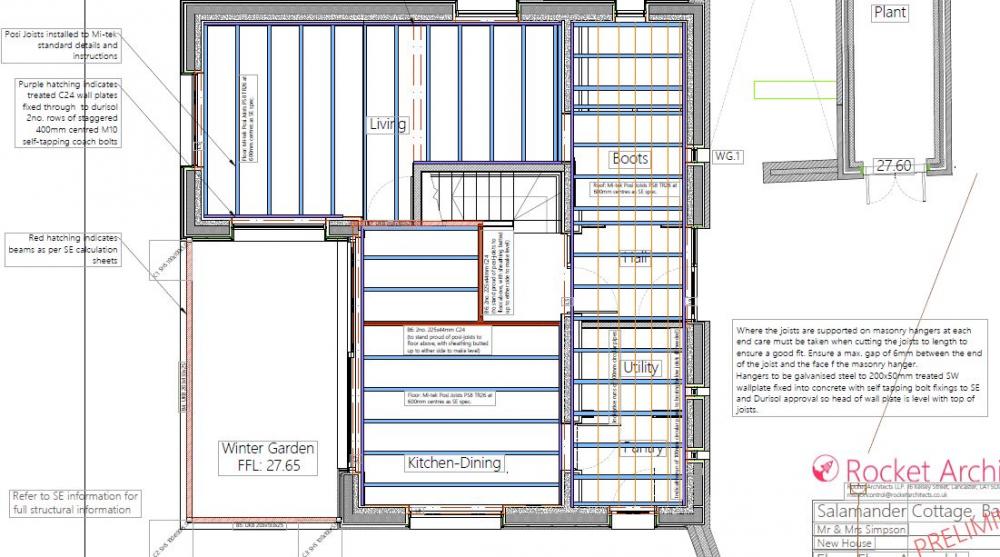Search the Community
Showing results for tags 'hanger'.
-
I get that masonry wall floor joist hangers are favoured over traditional in-wall fixing of joists in the pursuit of airtight homes but can these hangers cope with 100 years of cyclical loading? Here is my beef. Driving a metal nail into a brittle masonry block to attach a hanger feels like an abuse of such dissimilar materials with long-term failure designed into the fixing. Next add 100 years of 80kg cyclical loading as humans walk around inside the home, stir in some thermal expansion and contraction loads on the hanger attachments and surely after a decade or two the hanger nails will start wobbling in the blocks? Then finally for a laugh apply that process to light thermal blocks. Are my concerns unfounded? The no nonsense commercial builder of a plot nearby has fitted his metal web floor joists direct into the inner blockwork and these blocks are heavy structural blocks I think.
- 20 replies
-
- joist hangers
- metal joist hanger
- (and 6 more)
-
As I suspected, this learning curve really is pretty steep. So in an attempt to make sure that I reduce the number of errors in establishing our first floor at the correct level, I thought it might be an idea to start a thread - hopefully I'll be able to summarise it as a check list later. First: the end in mind Accurately mark out the position of the top of the wall plate (rim joist) such that our 202 POSIs sit at the correct height. Follow this bit of maths through with me please: Assuming the top of the POSIs is the same level as the top of the wall plate , it (the rim joist) needs to be 20mm (the depth of the decking) below FFH; (2350+255); that is (2605-20) = 2585mm above FFL In order to mark it out, since our floor is currently 25mm below FFL (currently we are at sub-floor) we need to add another 25mm = 2610mm above our current floor Naturally, it isn't that simple is it? Our timber spec is C24, treated, 200 by 50. Well wadya know? Timber of that spec isn't. It's less than 200 and less than 50 (195 by 45 ish). Which means the bottom of our POSIs are going to be hanging low (to coin a phrase). Our hanger spec is 200 by 50 Does it matter that the bottom of the hangers are going to be below the bottom of the wall plate?
- 39 replies
-
- rim joist
- wall plate
-
(and 8 more)
Tagged with:
-
I think I have got my head round the principles of putting the first floor in its place (is that a pun?). I have read the relevant guidance (The POSI Joist Handbook) - and see architects note top left below. I have also read the architects note (bottom -right) which shows me I need to use 200 by 50 treated softwood. Here's our first floor And here's how Durisol recommend I attach the wall plate to the wall So far so good. POSI say I must use a hanger (and the architect says so too) because of air-tightness, and that means I need to..... make sure the fixing for the hanger doesn't penetrate the wall (and so compromise air-tightness) or put air-tightness tape over the masonry hanger fixing. Hanger - to wall-plate: I have a strong feeling I can't get away with 50mm screws for the connection between the hanger and the wall plate can I? What size will those screws need to be? Wall-Plate to wall: Self tapping M10 coach bolts at 400mm centers (architects note above) to attach the wall-plate to the wall? The key thing is that they connect with the concrete isn't it, even if the 400 mm centers guidance happens to fall outside the concrete core (i.e. into the 'wood' of the Durisol block? I think I'll probably need to embed the wall-plate fixing in resin won't I - for air-tightness?
- 50 replies


